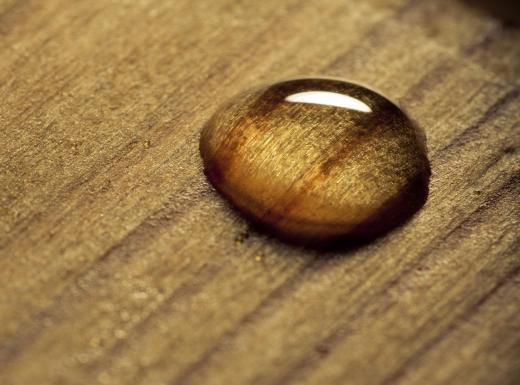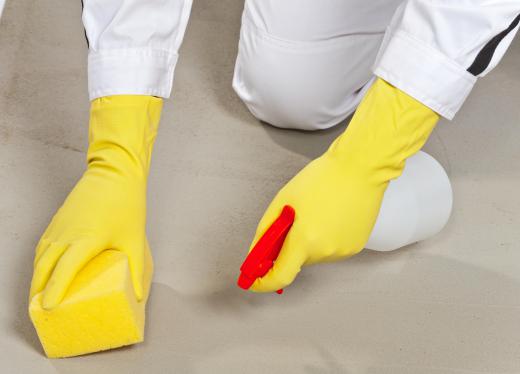Floor sealant is a protective coating applied to a variety of flooring surfaces. Sealants are generally made from a variety of plastic polymers and adhesives that form a strong bond with each other and the hard floor. The life expectancy of a horizontal surface can be effectively increased with a layer or two of floor sealant. Paint rollers, squeegees, and pressure sprayers are often used to spread the floor sealant evenly over the surface. Liquid sealant is left to dry on the floor to create a barrier against moisture, stains, and signs of wear.
A flooring surface must be thoroughly cleaned prior to sealing so any debris that may reduce cohesion is removed. Wood and natural stone floor sealants are usually designed to seep below the surface of the porous natural material to form a strong bond. Floor sealant sticks only to the top surface and itself on non-porous flooring materials. The fully cured floor sealant prevents water from entering or leaving the flooring material to stabilize its moisture content. Sealed floor surfaces exposed to outdoor elements typically require resealing annually or biannually.

Epoxy floor sealant is an ultra-durable flooring protection often used on cement flooring. Most epoxy sealants are able to resist engine oil and other automotive fluids, which makes this type of sealant an ideal garage floor cover. An activating chemical is included with most epoxy sealants to start the curing process. Some epoxy floor sealants come with small pieces of plastic confetti intended to texturize the coated surface. The plastic confetti is sprinkled evenly over the drying epoxy so it stays in place and increases traction.

The many floor sealant options allow for expressions of personal style that can complement the decor of a room. Sealants can be purchased in clear, tinted, and opaque tones. Clear floor sealants allow the original color and texture of the flooring surface to show through. Tinted and opaque color choices alter the look of the flooring to match other colors in the surrounding space. A combination of colored and clear floor sealants can be used to create a colorful look with a clear glossy finish.

Sealants are available for all types of flooring at home improvement and hardware stores. Most sealant packages list an estimated coverage area in square feet. Floor sealant is ordinarily applied a few inches up the base of the adjacent walls. Coating part of the wall with sealant helps to prevent marks from shoe soles.
